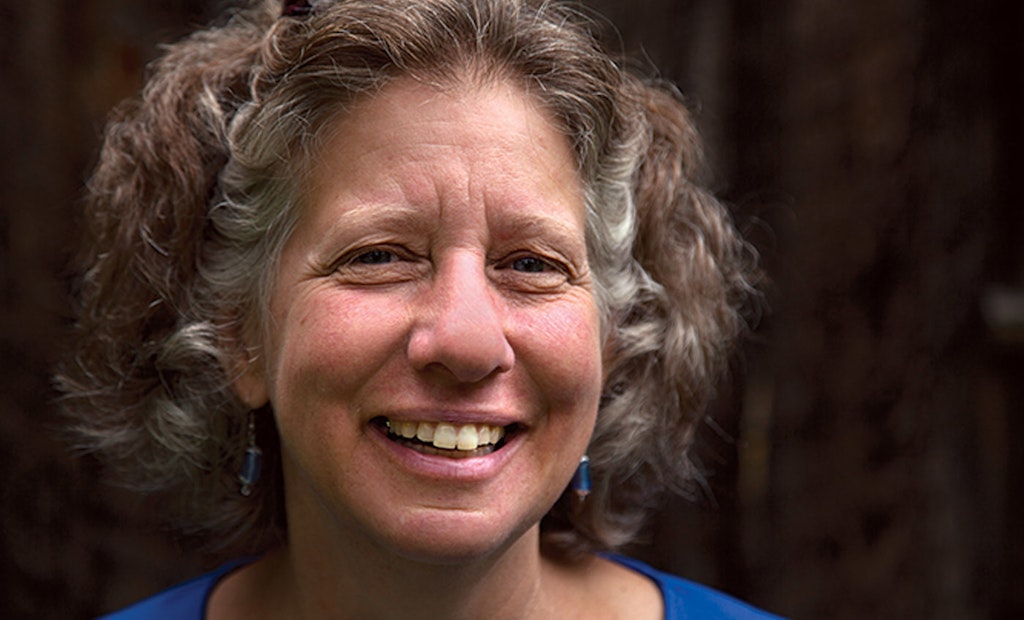Two organizations in Vermont are testing a new approach to wastewater management: diverting urine from septic systems, then sanitizing it for use as a nutrient-rich fertilizer.
The Rich Earth Institute is collaborating with the Windham Regional Commission to conduct the feasibility study. So far, nearly three dozen households in areas of the village of Westminster and the town of Dummerston have expressed interest in using urine-diverting or composting toilets. The special toilets divert urine to collection tanks instead of to septic systems, says Kim Nace, executive director of the Rich Earth Institute, a nonprofit group that researches ways to use human waste as a resource.
One aspect of the study centers on asking homeowners if they’re willing to adopt urine-diverting or composting toilets, as well as taking on the maintenance regimes associated with them, says Emily Davis, a planner at the Windham Regional Commission. Based in Brattleboro, the group provides planning and technical assistance on a wide variety of issues to 27 municipalities in southeastern Vermont. “There’s a lifestyle change embedded within these systems, so talking about that is a good conversation to have — how to best manage our waste,” she says.
The feasibility study’s ultimate goal is double-pronged. The first goal is to better protect both groundwater and surface water from nutrient (i.e., nitrogen) pollution emitted by septic systems in Vermont’s many rural villages. Urine makes up an estimated 1% of a centralized municipal wastewater stream, but it accounts for about 80% of the nitrogen and 55% of the phosphorus in wastewater, Nace says.
“Septic systems don’t remove nutrients, so they get washed through the leachfields and into the groundwater,” she says. “So we have a nutrient-pollution problem. But we can resolve that if we collect, transport, process and land-apply the urine. Through processing, we can collect 80% of the nitrogen in wastewater.”
Homeowners are generally open to the discussion when they realize how urine-diversion systems could spare them the huge expense of replacing their septic systems. “People are very interested in saving money,” Nace says. “So if we can save people $20,000 (for a new septic system) by recycling urine … they’re very eager to learn about that.”
SUSTAINING LOCAL ECONOMIES
The second goal is sustaining economic growth and promoting sound land-use decisions in smaller communities, where many businesses and residents can’t afford to either replace or add more capacity to the existing wastewater treatment infrastructure.
“More than half of the state’s 624,000 residents rely on septic systems and live in rural communities … where the wastewater situation confines and constrains their ability to remain vital,” Nace explains. “People don’t always have the financial means to upgrade their septic systems. … As such, they can’t add bedrooms or start local businesses because there’s not enough (wastewater treatment) capacity to handle additional growth.”
On a larger level, the wastewater issue stymies the state from fulfilling one of its land-use planning goals: promoting “clustered” development, which helps minimize development sprawl and protects natural resources, Davis says. It’s difficult to promote clustered development when existing wastewater infrastructure doesn’t have the capacity to handle more growth.
“In Vermont, our historic community centers still actually exist and remain the cultural centers for people who live here,” Davis says. “But because they’re old and historic and the infrastructure is aged, their wastewater facilities don’t meet the demands imposed by more clustered communities.
“When you think about their future sustainability and viability with the current wastewater infrastructure, the situation is a little bleak,” she adds, noting that large community wastewater treatment centers are costly. “So reducing the (nutrient) load with closed-loop nutrient systems just might help address some of the larger wastewater issues.”
A WORK IN PROGRESS
Roughly 100 households currently participate in a Rich Earth Institute-run urine-diversion program operating since 2012. Nace says she would like to double the number of program participants by the end of the year. The group has a state permit to run the program for 10 years.
In 2018, participants recycled a little more than 6,000 gallons of urine, using 5-gallon containers that they deliver to a central collection point in Brattleboro. The urine there is stored in 275-gallon IBC tote tanks. From there, a vacuum truck owned by the Rich Earth Institute transports the urine to a farm, where it’s sanitized in a mobile pasteurizing unit. The urine also can be sanitized at the Rich Earth Institute’s research center in Brattleboro, she says.
Here’s how the mobile sanitizer works: Urine is pumped into the electric-powered, fully automated pasteurizer, where it’s heated to 176 degrees F for a little more than a minute. The unit is mounted on a 4-by-8-foot trailer. To use as little energy as possible, the unit is outfitted with a heat exchanger that reclaims about 80% of the heat emitted by the hot urine as it leaves the unit through a pipe and then uses that heat to preheat the urine that’s getting pumped into the system. It can process nearly 800 gallons of urine a day, Nace explains.
“After urine is sanitized, it’s considered a Class A biosolids product, which we land-apply with a custom-built, gravity-fed liquid applicator in spring or fall at two local farms,” Nace explains. “The farmers are very eager to have it. They’re very happy with its effect on hay — it’s a very good fertilizer.”
People who participate in the program use different methods to divert urine. Some buy urine-diverting toilets or retrofit existing toilets with a separator. The urine is diverted to a small holding tank, usually located in a basement, while feces still get flushed into a septic tank. Others use small portable urinals to collect urine, Nace says.
Various components of the program are funded by grants from the National Science Foundation, the Long Island Sound Futures Fund, the High Meadows Fund, the Vermont Natural Resources Council and the Canaday Family Charitable Trust, she says.
The case for so-called peecycling is compelling. Nationwide, it’s estimated Americans use more than 1.2 trillion gallons of water a year to flush toilets. And an average person flushes a toilet five times a day, and four of those times it’s to dispose of just urine, not feces, Nace says.
Moreover, the average person uses more than 3,000 gallons of clean water every year just to remove urine from toilets. As such, Nace says a solution to wasting water and nutrient pollution is a no-brainer: Stop flushing toilets so often.
Nace also points out that just one person produces between 100 and 150 gallons of urine a year. That’s the equivalent of about 8 pounds of nitrogen and almost 1 pound of phosphorus annually, she says.
WIDESPREAD ADOPTION
The two groups hope to present a report soon to officials in both test areas that summarizes the study’s findings, including an estimated cost for toilet replacements and conversions. What happens after that is anyone’s guess, given that so many question still need to be answered, such as who would install the toilets and what’s the best way to overcome many peoples’ inherent discomfort with the issue and required lifestyle changes.
Nonetheless, Nace hopes the study could eventually pave the way for more widespread adoption of urine-diversion strategies not only in Vermont, but nationwide, though she acknowledges that could take a long time. “We’re pretty well aware that people around the country may be interested in this,” Nace says. “So we’re approaching this feasibility study as something that could be valuable to other communities.”
Is it feasible to do it on a mass scale? “We think it’s possible, for sure — even in urban locations,” Nace says. “We’d solve so many nutrient pollution problems across the country. But we’d need to make it seamless. … People are so hesitant to change their bathroom behaviors, so we need to do this in a way that won’t challenge them. This study will help us understand how we might do that.”
What role might septic pumpers play? Nace sees a day when pumpers would invest in small vacuum trucks dedicated just to collecting urine and transporting it to farms. “I definitely have a vision for that,” she says. “Urine-diversion strategies could create jobs for pumpers, haulers and plumbers.”








